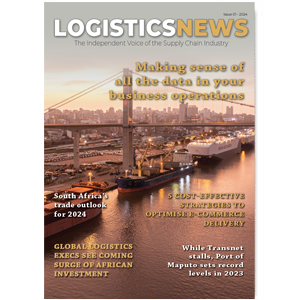There’s no doubt that COVID-19 expedited the rise in e-commerce and led to the now-near institution of the home economy.
While the pandemic is coming under control with an almost complete relaxation of restrictions, the on-demand delivery trend is now firmly fixed in consumers’ lives, so much so that big and small businesses need to adapt their last-mile logistics systems to cater to South Africans’ increasing appetite for at-home or work deliveries.
To underline this point, in 2021, South Africa’s e-commerce market was valued at $4.5-billion and digital platforms have been widely adopted by customers across various sectors including health, food and retail. So aggressive is this uptake that it is estimated that by 2027 the local e-commerce market will reach a value of $7.9-billion.
Research by the South African Digital Customer Experience Report 2021 shows that high shipping costs and unsatisfactory delivery options are the two primary contributors to a brand losing a sale at the virtual checkout. As such it is essential that businesses get that last-mile experience right, and that means upping their ante in the type of intelligent logistics solution software that they use.
With digitisation in the sector happening at a rapid pace, and certainly likely to come into being within the next two years, players like Picup are enhancing their experiences so that end customers get their goods quicker and more affordably. Here are the leading logistics technology trends that will soon influence the local on-demand sector – and make the home economy grow even bigger.
Emergence of 5G technology
5G offers data speeds that are 20 times faster than existing 4G long-term evolution (LTE) networks. What this means for on-demand deliveries is that service providers can enhance their ability to use analytics-based solutions to more effectively manage inventory and supply chains. This yields better accuracy rates and speed in reaching the end customer. 5G also has the potential to enable almost real-time data analytics, which allows businesses to make faster and more informed decisions such as circumstances related to weather or traffic. Further, 5G improves signal quality and connection, enabling drivers to work faster on the road.
AI and machine learning
Artificial intelligence and machine learning have played a major role in the logistics sector for years now, so this is not something new. But its use is helpful at providing last-mile logistics analysis and optimisation, supplier selection and workforce planning. In the case of last-mile delivery, AI has revolutionised the experience in ways such as creating more efficient route deliveries, streamlining business processes and enabling better customer satisfaction.
IoT
The Internet of Things (IoT) has impacted all areas of our lives, including the logistics industry. Through intelligent data analysis, it helps to manage assets remotely, predicts risk, ensures proper cargo handling and can forecast traffic congestion. In short, IoT creates the connection among goods, packaging, transportation hubs and vehicles.
Smartphone logistics
In days gone by, logistics firms would have had a hard time communicating in real-time with their drivers; now, thanks to the smartphone, they can be engaged while en route. They also send invaluable data back to the system instantly, while validating addresses while on the go. Smartphones are also paperless, so the humble waybill is a thing of the past as details are captured automatically while the intelligent devices can also optimise routes meaning the delivery happens quicker.
Changing to optimise delivery
Lastly, any brand that is adopting smart logistics technology will require a degree of change management across its business units as training will be needed to understand how to switch to technology-enabled systems. It is a 360° shift from traditional processes that are time-consuming, paper-heavy and slow to a more efficient, tech-enabled service that puts the customer first and delivers on-demand without any cumbersome processes to slow it down.




